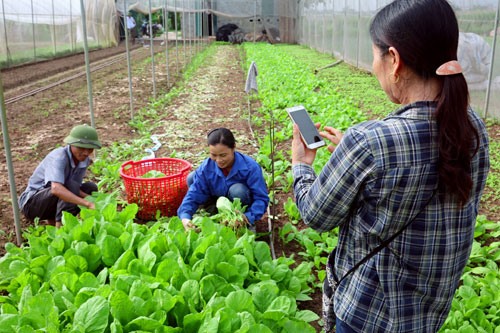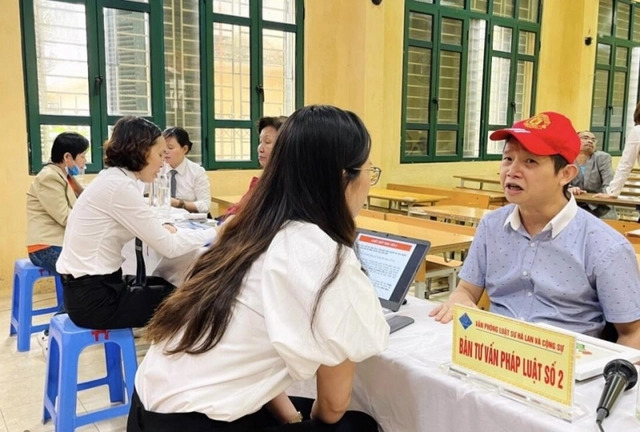 Society
Society

The use of codes and barcodes on products has helped improve the competitiveness of enterprises and ensured effective monitoring on the origin of goods for consumers.
 |
| Farmers of Chúc Sơn Fruit and Vegetable Cooperative in Chương Mỹ District, Hà Nội, check the bar code of their produce.— Photo Bá Hoạt |
HÀ NỘI — The use of codes and barcodes on products has helped improve the competitiveness of enterprises and ensured effective monitoring on the origin of goods for consumers.
However, to meet the requirements of management agencies and consumers, the application of codes and barcodes needs more comprehensive solutions relating to management and technology.
Codes and barcodes help quickly and accurately distinguish different types of products. The code consists of a sequence of numbers, which allow people to identify factors relating to the goods.
Barcodes consist of a pattern of parallel lines in varying widths, along with numbers, which are read by a computer of scanner.
According to the Việt Nam Code and Barcode Association, in recent years, the application of codes and barcodes in production and business has become increasingly popular nationwide.
There are about 180 trade centres, 800 supermarkets, 4,000 convenience stores, and 9,000 family run stores that use them.
Previously, codes and barcodes were mainly used when importing goods, as well as for payments at counters.
Nowadays, codes and barcodes are used for warehouse management, pricing, and logistics.
They’re also used to trace the origin of goods, especially foodstuffs, in order to ensure safety for consumers, and to ensure the quality of exported goods.
Hà Minh Hiệp, Deputy General Director of the Việt Nam Directorate for Standards, Metrology and Quality (VNDSMQ) told Hà Nội Mới (New Hanoi) newspaper tha the use of codes and barcodes is an effective application of technology which aims to help consumers and enterprises quickly identify information about products. However, the technology hasn’t reached its full potential, he said.
At present, many companies haven’t employed codes or barcodes for their products, preventing legal access to the retail industry. Notably, the use of fake codes and barcodes has been reported.
Recently, bar code scanning software has been widely used by smart phone users to identify the origin of goods. According to a representative of the Việt Nam Code and Bar Code Association, the use of smart phones to scan bar codes for the purpose of distinguishing real goods or counterfeit goods is necessary effort. Unfortunately, many goods have a standard bar code, but were fake or poor-quality.
National database system
Seeking the origin of products by scanning their code or barcode is necessary, but in order to effectively promote the circulation of goods in the market, additional tools are needed to ensure safety and quality.
According to Hà Minh Hiệp, one of the key tasks that the VNDSMQ has been implementing is to build a national data centre storing all information on codes and barcodes.
“We will have information resources on products and goods, so enterprises, manufacturers, supermarkets, and retailers can access data and better develop their services,” he said.
Phan Hồng Nga, head of the code and barcode office under VNDSMQ, said according to the Ministry of Science and Technology’s regulations on code and barcode granting, use and management, enterprises must periodically notify the list of codes and bar codes of their products.
VNDSMQ’s free online software – idd.gs1vn.org.vn – was set up for businesses to declare product information quickly and accurately. The information is then automatically updated on the national data system.
According to Hà Minh Hiệp, legal documents relating to codes and bar codes in Việt Nam are now relatively up to date.
VNDSMQ is submitting a project on managing the origin of products to the Ministry of Science and Technology. Once the project is approved, we will have additional tools to identify goods and remove poor-quality goods from the market.-- VNS




.jpg)